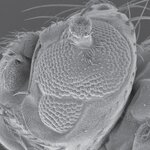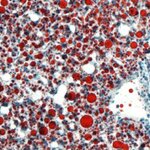Genetics & Molecular Biology

A research group examining how bacteria cope with stress, for example how the receptor meolecule CadC monitors the acidity in the environment and alerts the cell to take countermeasures to protect itself, led to some answers about protein synthesis, the core biosynthetic process that makes all metabolism possible.
They found that, in the absence of Translation Elongation Factor P (EF-P, for short), the cell doesn't make enough CadC to carry out its job effectively.
How does EF-P regulate protein synthesis in general, and the synthesis of CadC in particular? Ribosomes translate…

A project has identified the mechanism responsible for generating our fingers and toes, and revealed the importance of gene regulation in the transition of fins to limbs during evolution.
Their conclusion involves a theoretical model for pattern formation known as the Turing mechanism. In 1952, mathematician Alan Turing proposed equations for pattern formation, which describe how two uniformly-distributed substances, an activator and a repressor, trigger the formation of complex shapes and structures from initially-equivalent cells.
The Turing model for pattern formation has…

Science can make better corn and, well, better everything - except perhaps the Christmas tree.
The genome of conifers like spruce, pine and fir has remained pretty much the same for the last 100 million years - a remarkable feat of genomic stability. Researchers analyzed the genome of conifers and compared it to that of flowering plants. Both plant groups stem from the same ancestor but diverged about 300 million years ago.
They compared the genome macrostructure for 157 gene families present both in conifers and flowering plants. They observed that the genome of conifers has remained…

Retinoblastoma tumor suppressor proteins is, shall we say, untraditional. But it could mean new ways to treat cancer.
As an organism grows, proteins essential for fueling its prosperity typically toe a tight line, performing their jobs at the right place and time. If these proteins go rogue, disasters such as cancer can result.
Retinoblastoma proteins, which could be labeled as rebellious as opposed to rogue, perform acts of valor rather than destruction. And just like fireworks, they save their best work for the finale.
Proteins' lifecycles end with degradation, and like most…
In recent years, Britain has been invaded by Harlequin ladybirds, which are threatening our native species. In this picture, a native seems to be trying to mount a harlequin, although I cannot see any little larvae resulting from this activity!
Although it is referred to as an Asian ladybird, it seems that the invaders did not arrive directly from that continent. Indeed, the original Asian insects do not seem to be a threat at all, but something happened in one population in America:
Inbreeding Depression Is Purged in the Invasive Insect Harmonia axyridis
which reports that…

Tibetan and Ethiopian highlanders share a biological adaptation that enables them to thrive in the low oxygen levels of high altitudes, but the ability to pass on the trait appears to be linked to different genes in the two groups.
The adaptation is the share is the ability to maintain a low (for high altitudes) level of hemoglobin, the oxygen-carrying protein in red blood cells. Members of populations who historically live at low altitudes respond to the thin air by increasing hemoglobin levels. The response can help draw oxygen into the body to try and avoid hypoxia, but that increases…

Fatty liver disease, diabetes and obesity are health issues that are not going to be solved during the holiday season. The solution to much of it, healthier eating, is not realistic and so researchers at the University of California, Berkeley, examining the molecular mechanisms of how our body converts dietary carbohydrates into fat have found that disabling a gene with the catchy name BAF60c prevented carbohydrates from converting to fat, despite eating a high-carb diet. In mice, anyway
More than three-quarters of obese people and one-third of Americans have fatty liver, or…

If we will need climate-resistant corn and other food production plants sooner rather than later, applying a genetic-analysis method used to study and prioritize the genes in humans could improved the likelihood of finding critical genes in food production plants.
These genes control quantitate traits in plants, such as how the plants grow and when they flower. This method can be used to study how food production plants respond to drought, heat and other factors, giving scientists a greater chance at improving crops' resistances to harsh weather and environments.
For the study,…

In 1972, a term related to the parts of a genome sequence that don't have a known function was introduced. Like physicists with the 'God particle', a lot of biologists wish they could take back the term 'junk DNA' because it has been colloquialized to mean something different to the public than what it means biologically. Sometimes it just takes time to know what things do, if they do anything. A 2004 Nature paper removed 'gene deserts' - 0.1% of the mouse genome - with no effect they could find.
MicroRNAs are small pieces of genetic material similar to the messenger RNA that carries…

Evolutionarily speaking, most of the harmful mutations that still exist in people are recent, which makes the case that nature is still out to get us, even in modern times.
A study dated the age of more than 1 million single-letter variations in the human DNA code and revealed that 86 percent of the harmful protein-coding mutations of this type arose in humans just during the past 5,000 to 10,000 years. These kinds of mutations change one nucleotide – an A, C, T or G – in the DNA sequence.
Some of the remaining mutations of this nature may have no effect on people and a few might be…